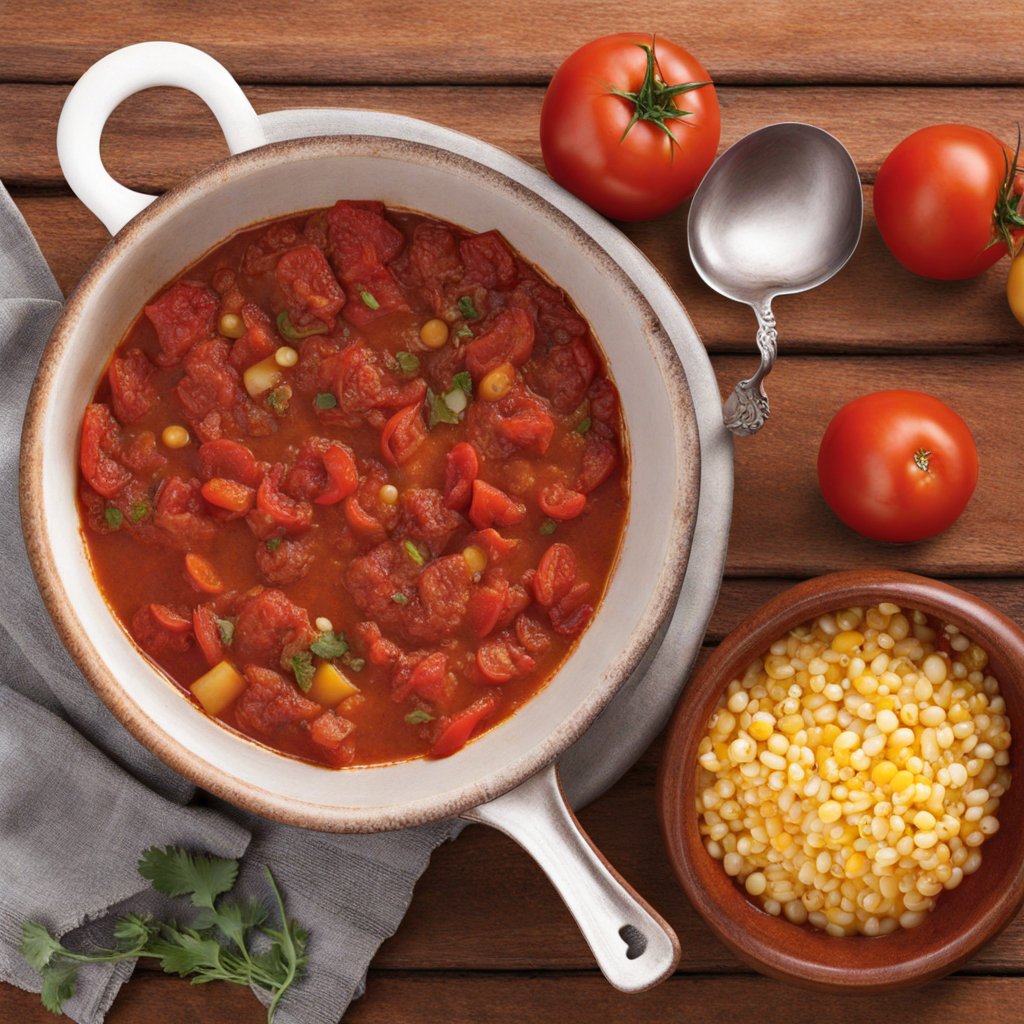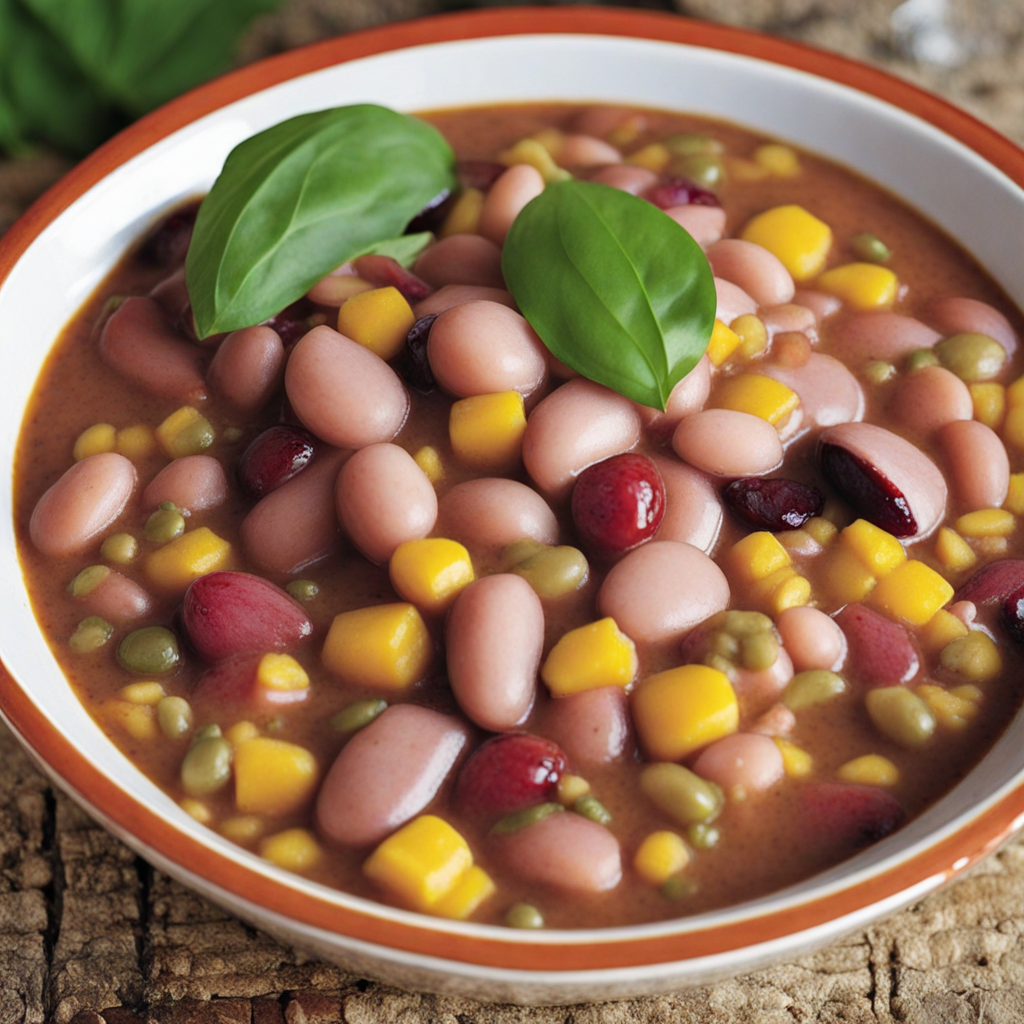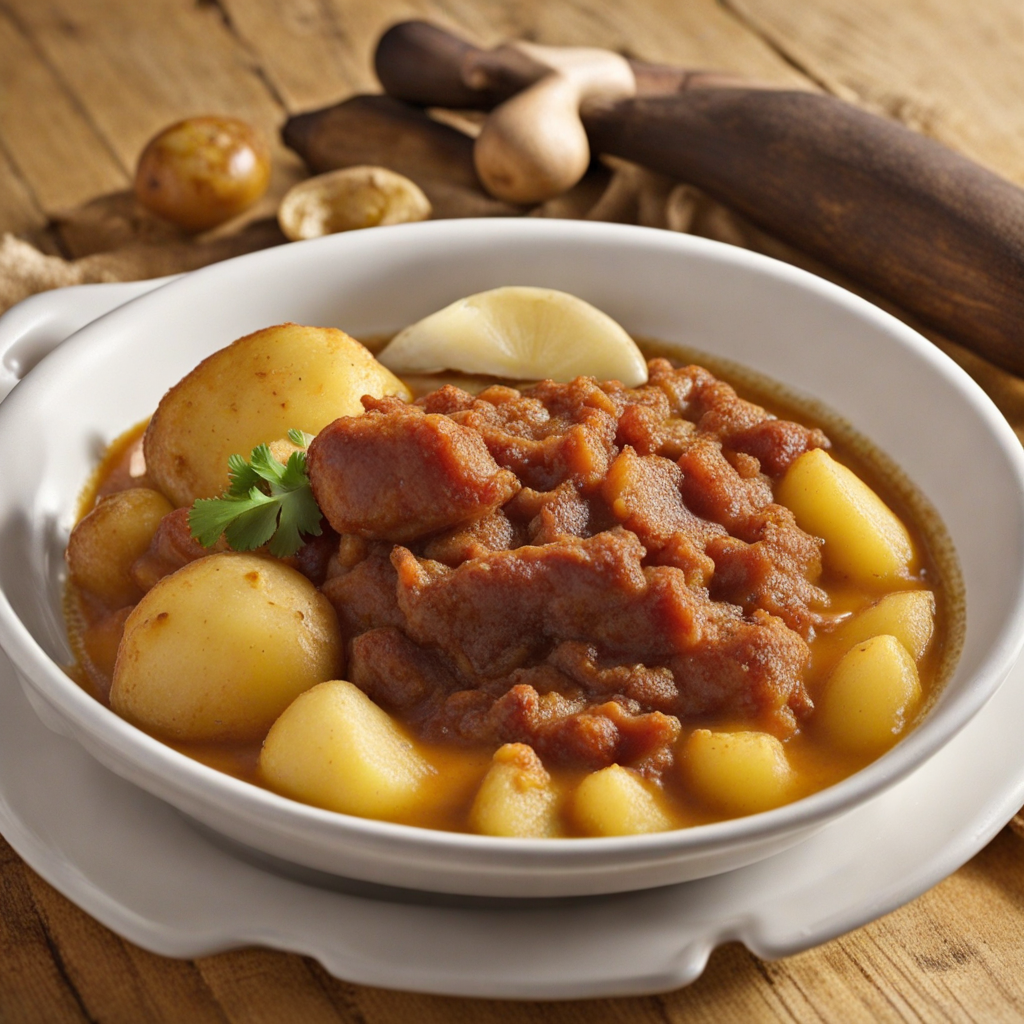Tomatican
Tomatican is a delightful dish that hails from the heart of Chile, characterized by its rich and comforting flavors. At its core, Tomatican features a vibrant mix of tomatoes, potatoes, and corn, creating a harmonious blend of textures and tastes. The tomatoes are typically stewed to create a luscious base, while the potatoes add a hearty substance to the dish. The corn contributes a subtle sweetness, enhancing the overall flavor profile. Often seasoned with spices such as cumin and oregano, Tomatican offers a warm, aromatic experience that is both satisfying and invigorating. As a rustic dish, Tomatican is often prepared in a communal setting, reflecting the traditional culinary practices of rural Chile. It can be enjoyed as a standalone meal or served alongside meats, making it versatile for various dining occasions. The dish is usually garnished with fresh herbs, such as cilantro or parsley, which not only add a pop of color but also elevate the fresh, vibrant flavors of the tomatoes and vegetables. What truly makes Tomatican special is its ability to evoke nostalgia and comfort, reminiscent of home-cooked meals shared with loved ones. Its simplicity belies the depth of flavor that can be achieved through careful cooking and quality ingredients. For those looking to explore new tastes, Tomatican offers a unique glimpse into Chilean cuisine, showcasing the country's agricultural bounty and the warmth of its culinary traditions.
How It Became This Dish
Tomatican: A Culinary Journey Through Chile’s Rich Heritage #### Origins of Tomatican Tomatican is a traditional Chilean dish that embodies the heart and soul of Chilean cuisine. Its name derives from “tomate,” the Spanish word for tomato, highlighting the dish's essential ingredient. The origins of Tomatican can be traced back to the rural areas of Chile, where it was commonly prepared by peasant families, particularly in the central regions, where tomatoes and other vegetables are abundantly cultivated. The dish is believed to have been influenced by the indigenous Mapuche people, who had a deep understanding of agriculture and used local produce to create nutritious meals. The arrival of the Spanish colonizers in the 16th century introduced new ingredients such as peppers and garlic, which further enriched the culinary landscape of Chile. This fusion of indigenous and Spanish influences laid the groundwork for what would become Tomatican—a hearty stew that reflects the agricultural bounty of the region. #### Cultural Significance Tomatican is more than just a dish; it represents the agricultural heritage and communal spirit of Chile. Traditionally, it was prepared in large quantities to feed extended families, particularly during harvest times when tomatoes were plentiful. The dish is often made with a mix of fresh tomatoes, peppers, onions, and sometimes meat, usually beef or chicken, creating a vibrant and flavorful meal that speaks to the agrarian lifestyle of rural Chileans. The communal aspect of preparing and enjoying Tomatican is significant in Chilean culture. Families would come together to cook, sharing stories and laughter as they chopped vegetables and stirred the pot. This gathering element is central to many Chilean meals, and Tomatican, with its rustic and homey appeal, has become a symbol of togetherness. In addition to its familial ties, Tomatican is often enjoyed during national celebrations and festivities. It is a popular dish during Fiestas Patrias (Chilean Independence Day), where families gather to celebrate their heritage and enjoy traditional foods. This connection to cultural identity is vital, as it allows Chileans to honor their past while embracing their culinary traditions. #### Development Over Time As with many traditional dishes, Tomatican has evolved over the years. Its basic recipe remains relatively simple, focusing on fresh, local ingredients. However, variations have emerged depending on regional preferences and family recipes. Some cooks prefer a vegetarian version, omitting meat and adding more vegetables, while others may incorporate spices or ingredients from other cultures, reflecting the global influences on Chilean cuisine. The post-colonial era saw a significant shift in Chilean agriculture, with the introduction of new farming techniques and crops. This agricultural revolution not only increased the availability of ingredients like tomatoes but also diversified the flavors and textures found in Tomatican. Additionally, as urbanization increased in the 20th century, many rural families migrated to cities, bringing their culinary traditions with them. Tomatican became a staple in urban households, often adapted to suit the fast-paced lifestyle of city living. In Chilean restaurants, Tomatican has found a place on menus, showcasing the dish's rustic roots while elevating its presentation. Chefs often experiment with gourmet twists, incorporating artisanal ingredients or modern cooking techniques, which has helped to keep the dish relevant in contemporary Chilean cuisine. This blend of tradition and innovation allows Tomatican to thrive in a modern culinary context, appealing to both locals and tourists seeking authentic Chilean experiences. #### The Ingredients of Tomatican At its core, Tomatican is a celebration of fresh produce. The primary ingredient, tomatoes, is typically sautéed with onions, garlic, and peppers, creating a rich base. The choice of meat can vary, with beef or chicken being the most common. Some variations even include seafood, particularly in coastal regions where fish is a staple. Spices such as cumin and oregano are often added, enhancing the dish's flavor profile. The beauty of Tomatican lies in its adaptability; each cook may have their own secret ingredient or technique, making every version unique. This flexibility not only reflects personal taste but also highlights the availability of local ingredients, reinforcing the connection between food and the land. #### Tomatican in Modern Chile In recent years, there has been a renewed interest in traditional Chilean dishes like Tomatican, particularly among younger generations who are eager to explore their culinary heritage. Cooking classes, food festivals, and social media have played a significant role in this revival, allowing people to share their family recipes and variations of Tomatican with a broader audience. Moreover, as the global movement towards sustainable and local eating continues to grow, Tomatican stands as a prime example of a dish that champions seasonal ingredients and minimal waste. The use of vegetables that are in season not only enhances the flavor but also supports local farmers, making Tomatican a dish that embodies both sustainability and tradition. #### Conclusion Tomatican is more than just a meal; it is a reflection of Chile’s agricultural history, cultural identity, and communal values. From its humble beginnings in rural kitchens to its place on modern restaurant menus, Tomatican has endured as a beloved staple of Chilean cuisine. Its evolution over time showcases the adaptability of traditional foods in a changing world, while its cultural significance continues to foster connections among families and communities. As Chileans embrace their culinary heritage, Tomatican remains a cherished dish that brings people together, reminding them of the simple pleasures found in shared meals and the rich tapestry of flavors that define their nation’s identity. Whether enjoyed at a family gathering, during a national celebration, or at a trendy café, Tomatican will always hold a special place in the hearts of those who savor its warmth and comfort.
You may like
Discover local flavors from Chile







